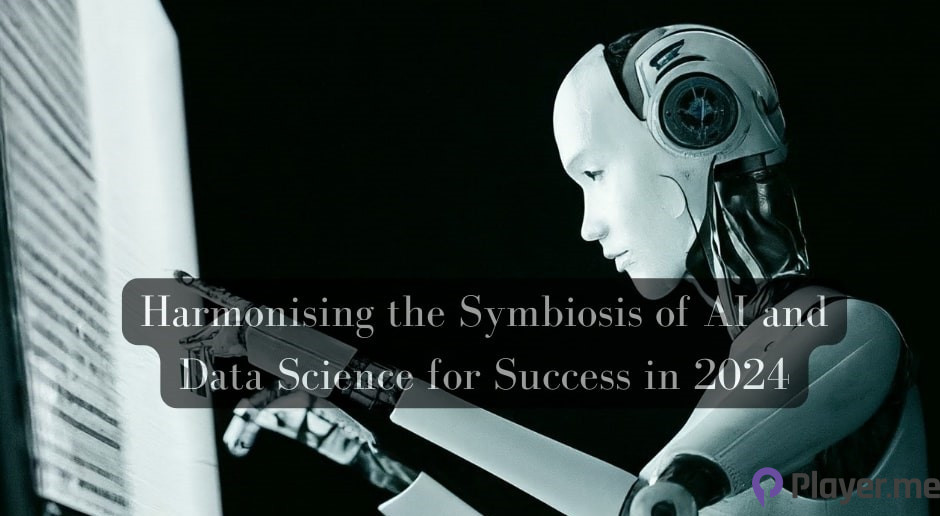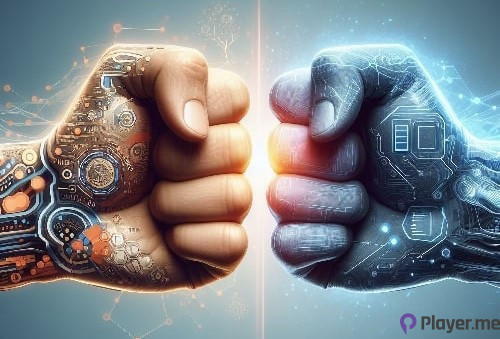AI and data science stand as pillars of influence in the modern world, each contributing significantly to the evolution of technology. As we step into 2024, the symbiosis of AI and data science becomes increasingly crucial. AI relies on data for learning and improvement, while data science employs AI to analyse and extract valuable insights. This intricate dance between the two fields holds immense potential for reshaping the technological future.
The Digital Era and Rising Opportunities

We live in an age that is defined by digital advancements and data-driven decision-making. The One Hundred Year Study on AI (AI100), an ongoing project hosted at Stanford University, predicts a profound impact of AI on various aspects of human life and society. Simultaneously, the World Economic Forum identifies the symbiosis of AI and data science as one of the most sought-after skills and professions of the future. It recognises data’s role in unlocking innovation, efficiency, and value creation across various sectors.
The success of businesses, organisations, and individuals in 2024 depends on their ability to take advantage of the symbiosis of AI and data science. This involves understanding the intricate relationship between the two and leveraging their synergies to achieve goals and objectives.
Read More: Prospects, Challenges, and Consequences of Generative AI in 2024
Symbiosis of AI and Data Science: Process Explained
A truncated approach is crucial when combining AI and data science. The following steps explain the key actions needed to be taken to achieve synergy between these two influential fields.

Define the Problem and Goal
The initial step requires a clear definition of the problem and the goal that AI and data science aim to address. This involves setting the project’s scope, identifying pertinent data sources, and determining the specific AI techniques and data science methods required. By establishing these parameters, the groundwork is laid for a focused and effective application of technology.
Collect and Prepare Data
The second step of the process focuses on the symbiosis of AI and data science. It involves the collection and preparation of the data essential for training AI models and conducting thorough data analysis. This phase involves tasks such as sourcing, cleaning, transforming, and integrating data from diverse sources. Ensuring the quality, validity, and reliability of the data is crucial, forming the core of subsequent stages of the harmonisation process.
Apply and Evaluate Solutions
Moving forward, the third step involves the practical application and evaluation of AI and data science solutions customised to the defined problem and goal. This phase requires implementing suitable AI techniques, such as supervised or unsupervised learning, and data science methods, including descriptive or predictive analytics. Rigorous assessments of performance, accuracy, and effectiveness are conducted to fine-tune and optimise the chosen solutions.
Communicate and Deploy Results
The final step concentrates on effective communication and deployment of the results and insights derived from AI and data science solutions. This involves presenting findings in a clear and comprehensive manner, using data visualisation tools to enhance understanding of the symbiosis of AI and data science. The translation of these insights into actionable recommendations specifically customised to leverage the symbiotic relationship between these two, is crucial. Additionally, the integration of AI models into existing processes ensures a seamless transition and incorporation of these technologies into the broader operational framework.
The Future Landscape of AI and Data Science
The future goals of AI and data science revolve around creating smart solutions driven by data. These solutions aim to improve life quality, work efficiency, and scientific innovation for humanity. The symbiosis of AI and data science is set to tackle challenging problems in health, education, the environment, security, and entertainment by using the potential of data algorithms and computation. Moreover, they seek to push the boundaries of knowledge and discovery, exploring intelligence, learning, and creativity while also creating new forms of art, culture, and expression.
To stay ready for the changing needs of the 21st century, AI and data science professionals must foresee and adapt to evolving societal and industrial expectations. This involves understanding current and future trends, opportunities, and challenges in AI and data science and how they impact various aspects of human life. Developing skills, tools, and frameworks to design, implement, and evaluate solutions aligned with user and societal values is important. Building a culture of collaboration, communication, and diversity further facilitates idea exchange among different disciplines, sectors, and communities.

To take advantage of the symbiosis of AI and data science for societal benefits and sustainable development, professionals in these fields must channel their expertise and resources towards addressing global and local challenges affecting people and the planet. Identifying and prioritising relevant and urgent problems that can benefit from AI and data science solutions is much needed. Involving and empowering stakeholders and beneficiaries, such as governments, NGOs, civil society, and marginalised groups, ensures inclusive, accessible, and accountable solutions. Additionally, measuring and monitoring the impact and outcomes, learning from successes and failures, and continuously improving and scaling solutions are essential steps in this journey.
Read More: A Comparative Analysis: Quantum AI vs. Classical AI
Balancing Power and Responsibility
AI and data science, two powerful and interdependent fields, offer a dynamic symbiosis crucial for success in 2024. However, the responsible use of these technologies must be a priority, considering their ethical, legal, and social implications. By combining this symbiotic relationship, various entities can create substantial value and impact.
The symbiotic relationship between AI and data science not only propels individual entities towards success but also contributes to broader societal well-being and progress.
Author Profile
Latest entries
 GAMING2024.06.12Top 4 Female Tekken 8 Fighters to Obliterate Your Opponents in Style!
GAMING2024.06.12Top 4 Female Tekken 8 Fighters to Obliterate Your Opponents in Style! NEWS2024.03.18Elon Musk’s SpaceX Ventures into National Security to Empower Spy Satellite Network for U.S.
NEWS2024.03.18Elon Musk’s SpaceX Ventures into National Security to Empower Spy Satellite Network for U.S. GAMING2024.03.17PS Plus: 7 New Games for March and Beyond
GAMING2024.03.17PS Plus: 7 New Games for March and Beyond GAMING2024.03.17Last Epoch Necromancer Builds: All You Need To Know About It
GAMING2024.03.17Last Epoch Necromancer Builds: All You Need To Know About It





